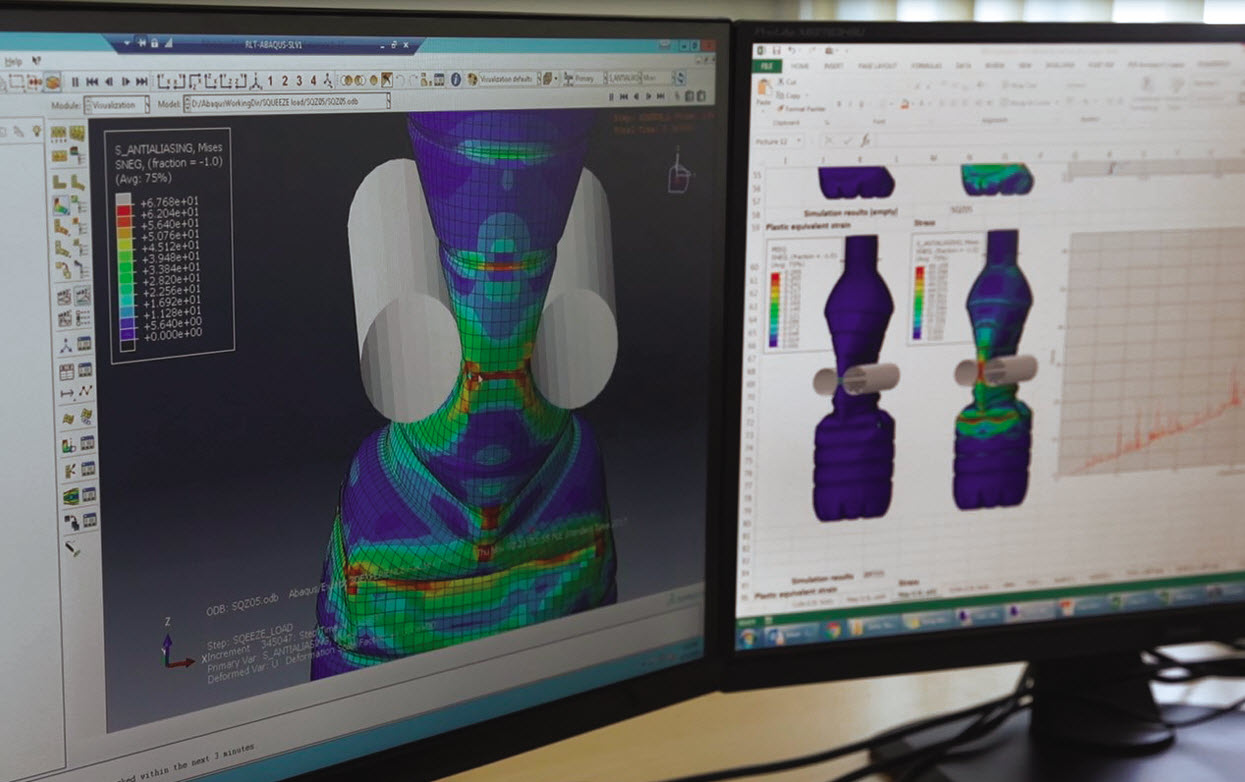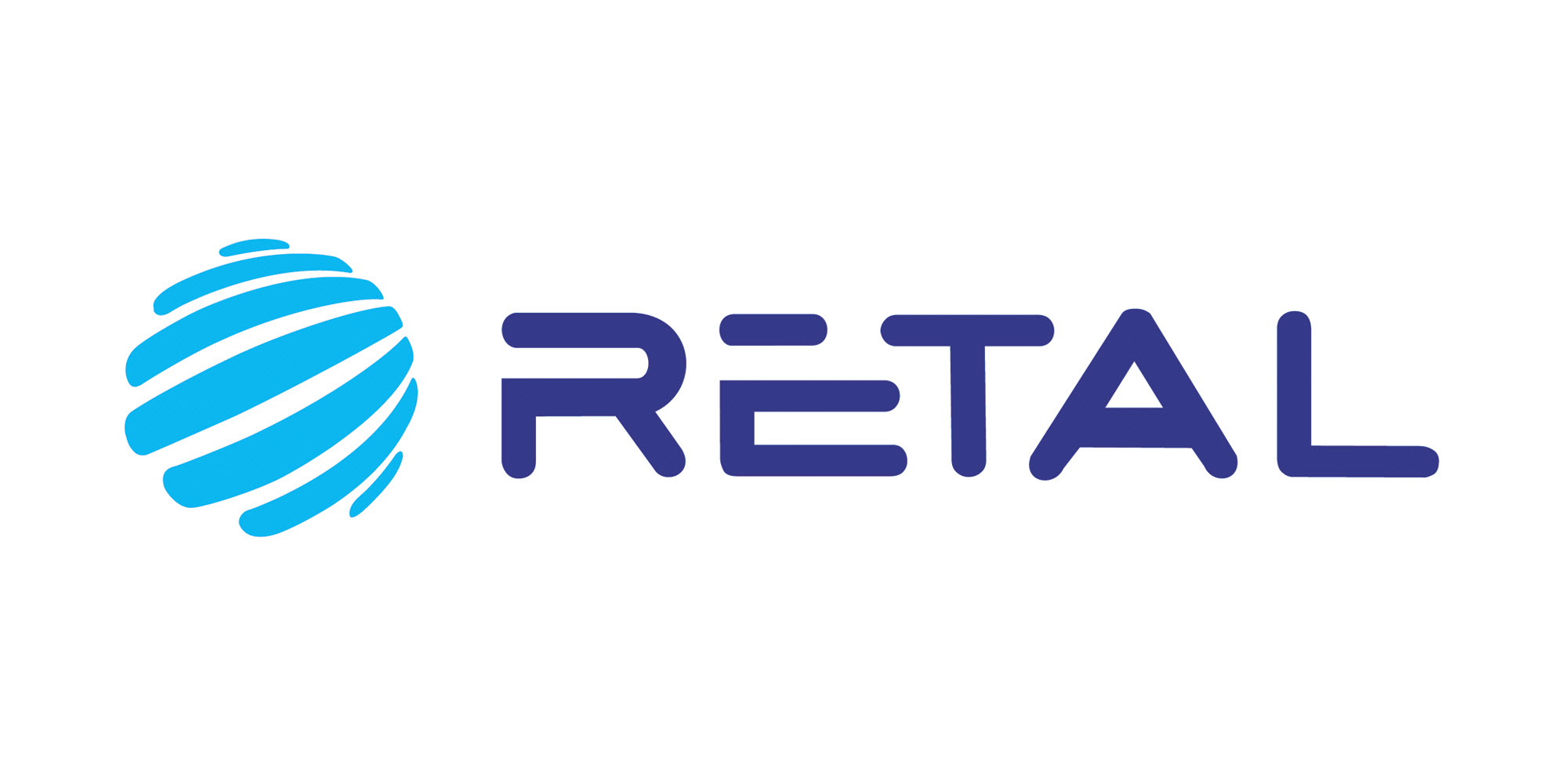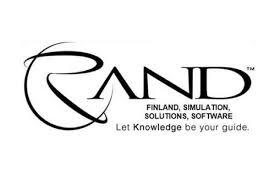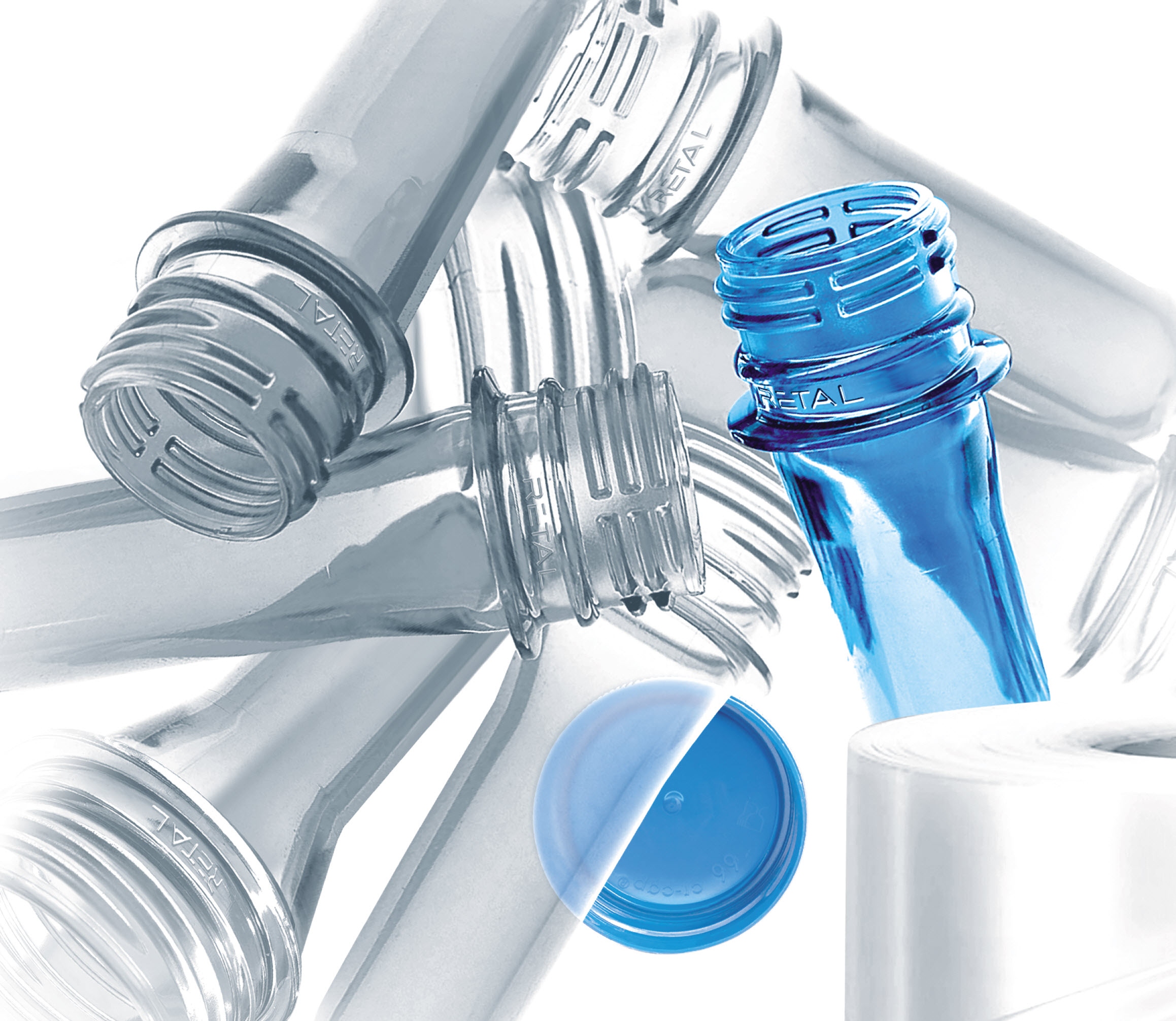RETAL
RETAL uses Dassault Systèmes' 3DEXPERIENCE platform, including its integrated applications CATIA for design and SIMULIA for analysis and digital simulation
Green packaging for the sustainably-minded consumer
Today’s health-conscious consumers are not only keen on eating right, they are equally attentive to the packaging of their food. This is why many manufacturers and brand owners are putting greater focus on the sustainability of their products. Polyethylene Terephthalate or PET is a recyclable plastic commonly used to make the containers that hold the water, sodas, juices, cosmetics and pharmaceutical products found in almost every household. It is lightweight yet strong and flexible.
RETAL is one of the largest PET preform manufacturers in Europe and central Asia with sights set on international expansion. “RETAL produces packaging solutions for companies all over the world in the food and beverage industry for water, carbonated beverages, juice, milk, as well as for cosmetics and household goods,” Andrew Huestis, public relations director, RETAL said. “We produce screw caps, also called closures, as well as preforms, which are tube-like pieces of plastic that are blown, using a process called stretch blow molding, into a PET container.” In addition to producing standard preforms from its extensive range, which vary in neck finish, weight, color and shape, RETAL also manufactures custom preforms tailored to individual customer requirements. “The packaging industry is driven by sustainability and time to market as well as by innovation because customers want distinctive packaging. We strive to excel in all three,” Huestis said.
“We believe that our customers’ success becomes our success,” Viktorija Jureviciute, general manager, RETAL Baltic said. “Our reliability as a supplier and partner, and our flexibility when responding to the needs of our customers has allowed us to gain their long-term loyalty and lays the foundation for our future growth with them.”
Innovative, lightweight designs
RETAL’s customers are many of the world’s leading brands that have a long history with the company. “These top brands have very high expectations, which I believe we meet because we provide high quality products at a competitive price,” Huestis said. “Because consumers choose brands that provide them with healthy and sustainable products, these brands in turn come to us to develop environmentally friendly solutions for their packaging needs. We also need to be innovative because our customers want to differentiate their products on the store shelf to attract consumers. This is why design is very important in our industry; we work closely with our customers who rely on our expertise and technology to help them develop attractive and lightweight containers and closures for their products.”
“Indeed, a major business driver in today’s competitive packaging market is to deliver high quality products at a lower cost,” Anton Sugoniaev, beverage packaging expert, RETAL R&D said. “Therefore, bottles must be lightweight, which reduces our customers’ costs because less plastic is used to produce the bottles. However, bottles also need to be sturdy and stable to withstand heavy loads when stacked during transportation and storage. By optimizing the preform, we can attain bottle performance similar to that obtained using a heavier preform.”
Accelerating responsiveness
“Another factor driving our customers is time to market,” Huestis said. “If they cannot quickly introduce innovations to satisfy endconsumers’ needs, someone else will. So we need to accelerate our response time. This and our emphasis on customer service are what differentiates us from our competition. We can make this possible because we have the latest manufacturing and testing equipment and the best software solutions.”
To satisfy its numerous challenges, RETAL adopted the 3DEXPERIENCE® platform with its seamlessly integrated applications CATIA for design and SIMULIA for analysis and digital simulation. “RAND Finland, a Dassault Systèmes business partner, introduced us to the 3DEXPERIENCE platform and helped us evaluate the best possible solution for our needs,” Huestis said. “RAND also implemented the 3DEXPERIENCE platform and provided initial training for our designers to bring them up to speed.”
The 3DEXPERIENCE platform helps us design and simulate the best package. We can rapidly come up with many different alternatives that customers can visualize in a digital environment before choosing the best one for physical prototyping.
RETAL leverages the design application CATIA to digitally develop and propose various container designs to its customers. This provides time savings by avoiding reiteration loops and reduces expenses by limiting the use of physical prototypes. “CATIA helps us design the best package because we can rapidly come up with many different alternatives that customers can visualize in a digital environment before choosing the best one for physical prototyping,” Sugoniaev said.
“With CATIA it’s easy to apply specific attributes to the product under development, like changing the wall thickness. When we are working on caps we can play with the knurling pattern and apply changes rapidly. The knurling pattern is a certain arrangement of side ribs designed to assure convenient grip for consumers during opening as well as robust torque transmission during automated capping,” he explained. “With respect to bottles we can play with diameters, modify a label position, change the decoration, and in the end we obtain various bottle designs, which are later selected according to their performance. In the past we worked with OEMs to produce drawings or to create prototypes, to see what the product would look like. This was always a time-consuming process. With the 3DEXPERIENCE platform, the design team can quickly deliver high-quality solutions in a digital environment. In this way, we rely less on physical prototyping and can even launch a product straight into production based only on its digital model,” Sugoniaev said.
Designers often use reverse engineering to improve bottle designs done by a third party. “I usually start with a 3D file, which can be obtained by scanning a bottle with our 3D scanner,” Andzejus Buinovskis, design engineer at RETAL said. “Once I have a 3D file, I import it into CATIA, and create as many sections of the bottle as I need. Otherwise, I would need to cut the actual bottle to obtain these samples, which would be deformed in the process. I can then redesign the bottle and create a surface model for simulation with the SIMULIA application to see how I can improve the preform and engage in light-weighting to make it lighter.”
“It is very important, in this case, to know how much material we save. So, we model the geometry and calculate the weight of the preform with CATIA, and apply the necessary design changes. Once validated, we generate the drawings and send them to our customer for production. Without the possibility to reverse engineer the bottle with the 3DEXPERIENCE platform, I would need a laboratory full of equipment to obtain the same results. There are other advanced features, which are useful in the 3DEXPERIENCE platform but the most important for me is the drafting feature. It allows me to quickly create drawings and to apply all the dimensions and annotations to the preforms, bottles and closures, which can have very complex surfaces,” Buinovskis said. “This entire process is fluid due to the seamless integration between the Dassault Systèmes applications CATIA and SIMULIA.”

Leveraging extensive preform library shortens cycle time
RETAL has an extensive library of preforms that are produced all over the world in its factories. “Using an existing preform helps me save time when I work on a new project because the associated drawings already include annotations and dimensions. All I need to do is change the 3D geometry and the drawing is automatically updated,” Buinovskis said. “Putting measurements on a new preform can take between 1 to 2 hours but if I reuse something that was done earlier, it will only take me about ten minutes to produce the final drawing.”
Julius Barniskis, design engineer at Retal is responsible for simulating the blow molding process. “If a customer wants a new bottle design, we use an existing preform, ask the customer to specify the volume and other characteristics of the bottle. Once the customer provides us with their requirements, we create a design in CATIA. Then we simulate the blowing process and bottle load scenarios in SIMULIA, and use these simulation results to adjust the design in CATIA. This procedure is repeated until we have an optimal bottle design,” he said. “We can perform top load scenarios to analyze the stresses exerted on the bottle and to determine how many bottles can be stacked during transportation or storage without being damaged. Other tests include burst pressure to determine the pressure at which the bottle will burst and squeeze tests to see how the bottle reacts when handled. Digital simulation makes our job easier because it helps us optimize the design of the preform, which reduces material costs for our customer,” he said.
“Just the other day, project managers from one of our U.S. customers contacted us to say that they were sending us a bottle for which a new more lightweight preform had to be designed,” Buinovskis said. “The bottle had to remain the same, only the neck needed redesigning. The bottle arrived during the weekend. On Monday we reverse-engineered the bottle, made the design adjustments the next day and in only three working days we finished the project,” he said with a smile. “The benefits for our customer were the ability to use the same bottle, but with a lighter neck, which allowed them to save material, save money, and produce more sustainable containers. The 3DEXPERIENCE platform helps us to better serve our customers and take their and our business to the next level.”
For Viktorija Jureviciute, RETAL’s future depends on its customers’ satisfaction. “What motivates me are the many challenges we encounter here at RETAL,” she said. “We are a very active, marketdriven business, which will continue to grow for many years. We sense our customers’ appreciation for the work we’re doing. Through the continuous improvement of our products, operations, processes, technologies and software I am confident we can quickly react to market trends in this fast-moving industry,” she said.

Focus on RETAL Industries
RETAL is a global developer and manufacturer of packaging solutions.
Products: PET preforms, closures, packaging films
Employees: 2,800
Revenue: €820 million
Headquarters: Limassol, Cyprus
For more information www.retalgroup.com

Focus on RAND Software
RAND Finland Oy specializes in product data management, Product Lifecycle Management (PLM), CAD/CAM, Realistic Simulations (FEA) and sales/product configurator initiatives.
RAND Finland Oy delivers turnkey solutions and services for the initiatives above. The cornerstone of our success is experienced and skilled people. RAND has +20 years’experience in delivering PLM solutions to Finnish/Nordic/ Global customers.
In addition to RAND’s own team we have a very wide network of professionals to complement our offerings. Rand Finland OY specializes in the following Dassault Systèmes software solutions: 3DEXPERIENCE, CATIA, SIMULIA, DELMIA, EXALEAD and ENOVIA
For more informaiton: www.rand.fi

